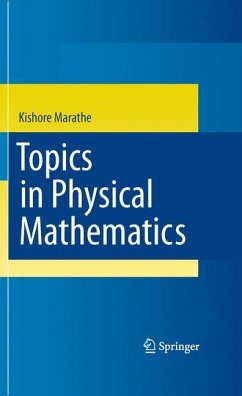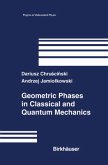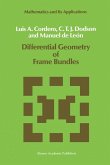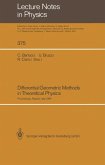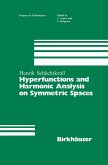As many readers will know, the 20th century was a time when the fields of mathematics and the sciences were seen as two separate entities. Caused by the rapid growth of the physical sciences and an increasing abstraction in mathematical research, each party, physicists and mathematicians alike, suffered a misconception; not only of the opposition's theoretical underpinning, but of how the two subjects could be intertwined and effectively utilized. One sub-discipline that played a part in the union of the two subjects is Theoretical Physics. Breaking it down further came the fundamental theories, Relativity and Quantum theory, and later on Yang-Mills theory. Other areas to emerge in this area are those derived from the works of Donaldson, Chern-Simons, Floer-Fukaya, and Seiberg-Witten. Aimed at a wide audience, Physical Topics in Mathematics demonstrates how various physical theories have played a crucial role in the developments of Mathematics and in particular, Geometric Topology. Issues are studied in great detail, and the book steadfastly covers the background of both Mathematics and Theoretical Physics in an effort to bring the reader to a deeper understanding of their interaction. Whilst the world of Theoretical Physics and Mathematics is boundless; it is not the intention of this book to cover its enormity. Instead, it seeks to lead the reader through the world of Physical Mathematics; leaving them with a choice of which realm they wish to visit next.
From the reviews:
"Topics in physical mathematics is a quite unique account of some of the mathematical background necessary for a beginner entering the field. ... the book offers an introduction and overview of some of the remarkable results that have been obtained in the first three decades of research in 'physical mathematics'. ... will be quite useful as a reference and overview of particular subfields within 'physical mathematics'. I can also ... recommending it to a beginning graduate student wishing to quickly fill some gaps of knowledge." (Johannes Walcher, Mathematical Reviews, Issue 2011 f)
"Reading this book will bring a real pleasure to all mathematically inclined Young physicists having the necessary mathematical luggage in their minds. ... it will bring the reader to feel the real correspondence between the real harmony in the physical world and the remarkable mathematical harmony among the various algebraic, geometric and topological structure." (Stoil Donev, Journal of Geometry and Symmetry in Physics, Vol. 22, 2011)
"The book covers a large subset of today's mathematics, especially focusing on stuff that has been very active and in vogue for the last half century or so. ... The audience of the book ... will consist of graduate students and researchers. ... I certainly enjoyed it; all in all, reading this book was a fun ... ." (Gizem Karaali, The Mathematical Association of America, August, 2012)
"Topics in physical mathematics is a quite unique account of some of the mathematical background necessary for a beginner entering the field. ... the book offers an introduction and overview of some of the remarkable results that have been obtained in the first three decades of research in 'physical mathematics'. ... will be quite useful as a reference and overview of particular subfields within 'physical mathematics'. I can also ... recommending it to a beginning graduate student wishing to quickly fill some gaps of knowledge." (Johannes Walcher, Mathematical Reviews, Issue 2011 f)
"Reading this book will bring a real pleasure to all mathematically inclined Young physicists having the necessary mathematical luggage in their minds. ... it will bring the reader to feel the real correspondence between the real harmony in the physical world and the remarkable mathematical harmony among the various algebraic, geometric and topological structure." (Stoil Donev, Journal of Geometry and Symmetry in Physics, Vol. 22, 2011)
"The book covers a large subset of today's mathematics, especially focusing on stuff that has been very active and in vogue for the last half century or so. ... The audience of the book ... will consist of graduate students and researchers. ... I certainly enjoyed it; all in all, reading this book was a fun ... ." (Gizem Karaali, The Mathematical Association of America, August, 2012)

